From primrose to sunshine, the colour yellow is having a moment. But, while it might be trending, inspiration for the shade selected by Kerryman Eamon O’Sullivan and his northern English wife Liz for their new-build came from nature. A blackbird singing in the hedge outside – the male bird’s beak to be exact.
Their colour choice helped give their house its name too, Lon Dubh – blackbird as Gaeilge. It also coats the five-bar gate to the front and it’s the punchy block of colour in the steel spiral staircase that leads up to a roomy mezzanine in the kitchen.
The exterior is a deep briquette brown that almost reads as black. For some it may appear to be a counterintuitive choice for living in the countryside, but there is a simple explanation, Eamonn says.
“We wanted the building to fit in. You see a lot of dark shadows through the trees, so we didn’t want it to be bright or stand out.”
READ MORE
The couple, who together run multidisciplinary design house Anchor Studio in Kenmare, met in London. And they know a thing or two about form, colour and function. He was working as a graphic designer on museum installations, while she worked in the sampling department of British fabric house and interior design firm Colefax and Fowler as a woven textile designer.
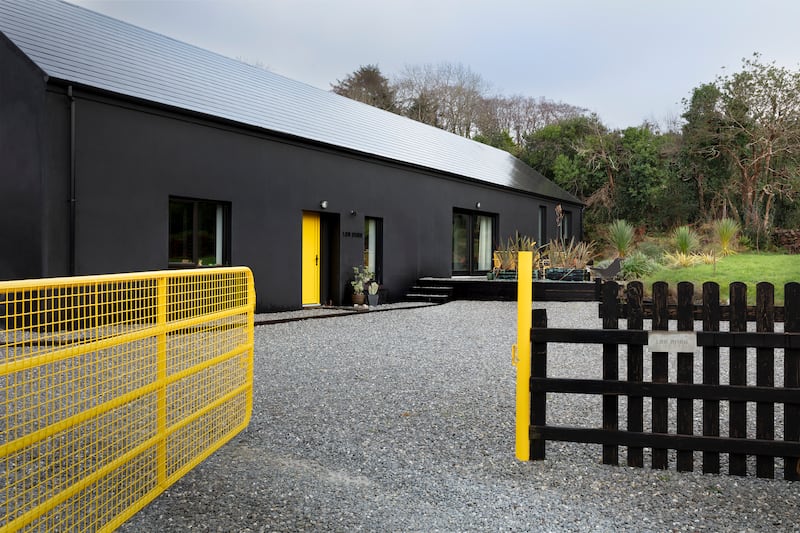
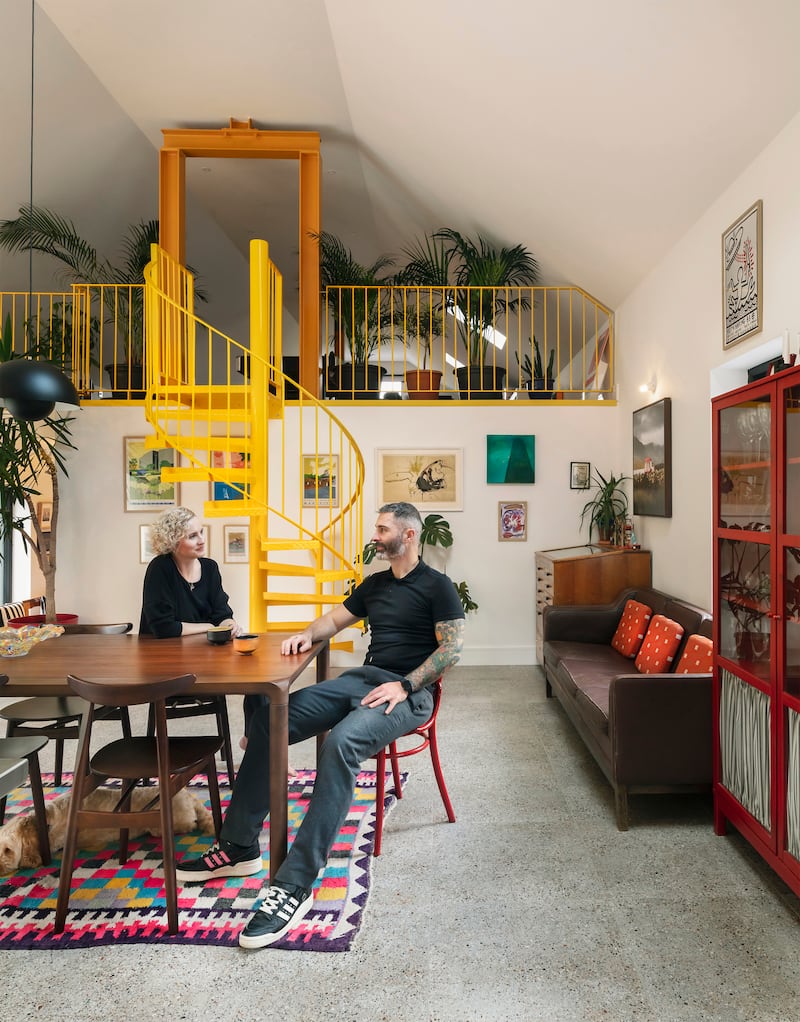
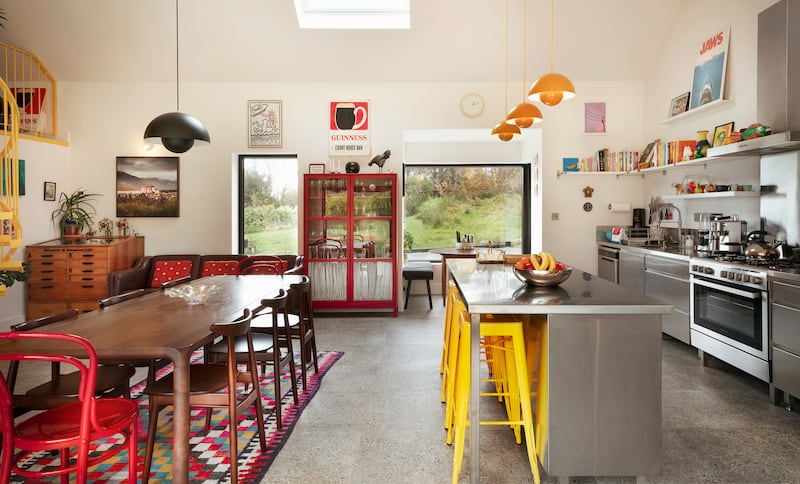
The design force is strong with the O’Sullivans. Eamonn’s brother is the decorator Bryan O’Sullivan, whose first formal training was at Dublin architect practice Duff Tisdall. His practice now boasts offices in London and New York and his work – on the Red Room bar at London’s Connaught Hotel, a penthouse at Claridge’s and Maybourne’s Beverly Hills and Roquebrune-Cap Martin hotels – earned him a spot on the 2024 Architectural Digest’s AD100 list.
Now a father of two, it was a chat that Eamonn had with his brother Bryan that sparked an idea about the potential of building near the folks, when the couple were living in Dublin and still looking to try to trade up. They couldn’t find anything with adequate space to accommodate their working and family lives.
With the family growing they made a decision, pre-pandemic, to relocate to Kenmare, where they rented a house from a friend.
At first look, the potential site seemed underwhelming, he recalls. “Below the [his parents’] house at the end of the garden was a boggy patch with bull rushes.”
The couple had some savings and used them to commission engineer Donagh O’Regan of Reeks Engineering to investigate further and draw up plans. He suggested clearing the site, and using all the rocks on one side to fill in the boggy part.
The site was also sloped, so architect Jane Foley designed the house in tiers to take into consideration its topography. It had to be a single storey to remain unobtrusive.
Planning in Kenmare is quite strict, says Eamonn. “We got it because I was the son of a landowner and there was a need – we were renting in the area.”
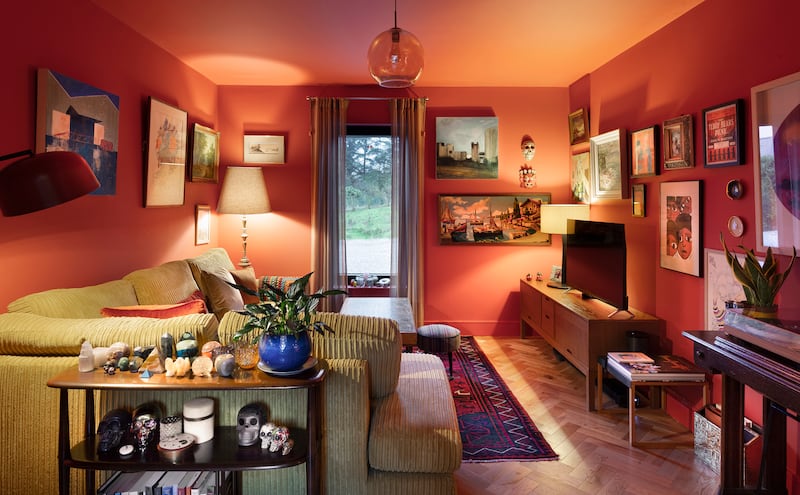

While the planning included permission to build a detached garage-cum-studio, they didn’t have the budget to do the additional construction. They needed three bedrooms and maximum space for their two boys, so instead, a mezzanine was suggested to fit above the dining area. This added 65sq m of space to the 156sq m of the house. “It gives us that extra room. We use every inch of it,” Eamonn says.
In a bungalow, the thinking was to go modern, says Liz, but the couple already had much of their furniture, a lot of which was mid-century. “We didn’t want to fit out the new house with all new stuff. The furniture we had was already 40 years old and had weight and history.”
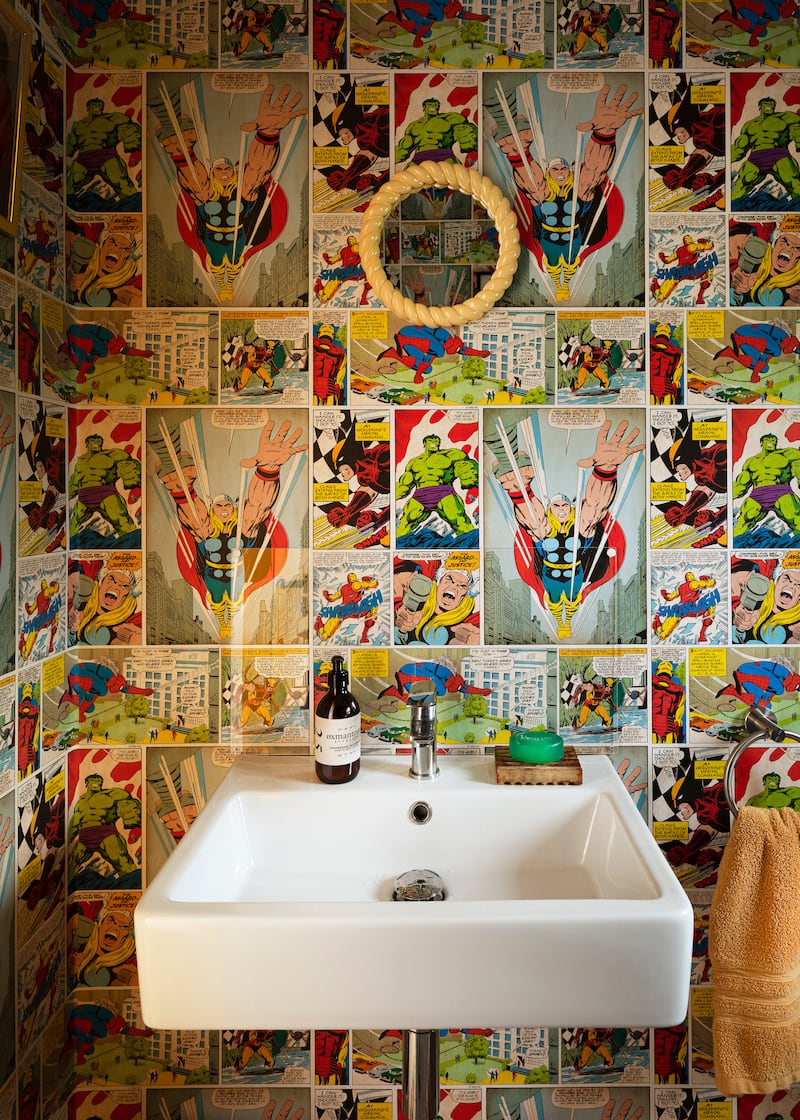
There were some concessions. They got a new couch for the livingroom – or “living womb”, as they have nicknamed it. They purposefully have no fire, a conscious decision around space and the environment, Liz explains. “We didn’t need it. Initially I thought I would miss a fire, but you get used to it.”
Liz spent all her spare time on eBay, Adverts and Done Deal. Eamonn’s brother Bryan “was horrified”, she says, but he did help them get some trade deals on materials such as the terrazzo-effect tiles in the hardwearing areas of the home.
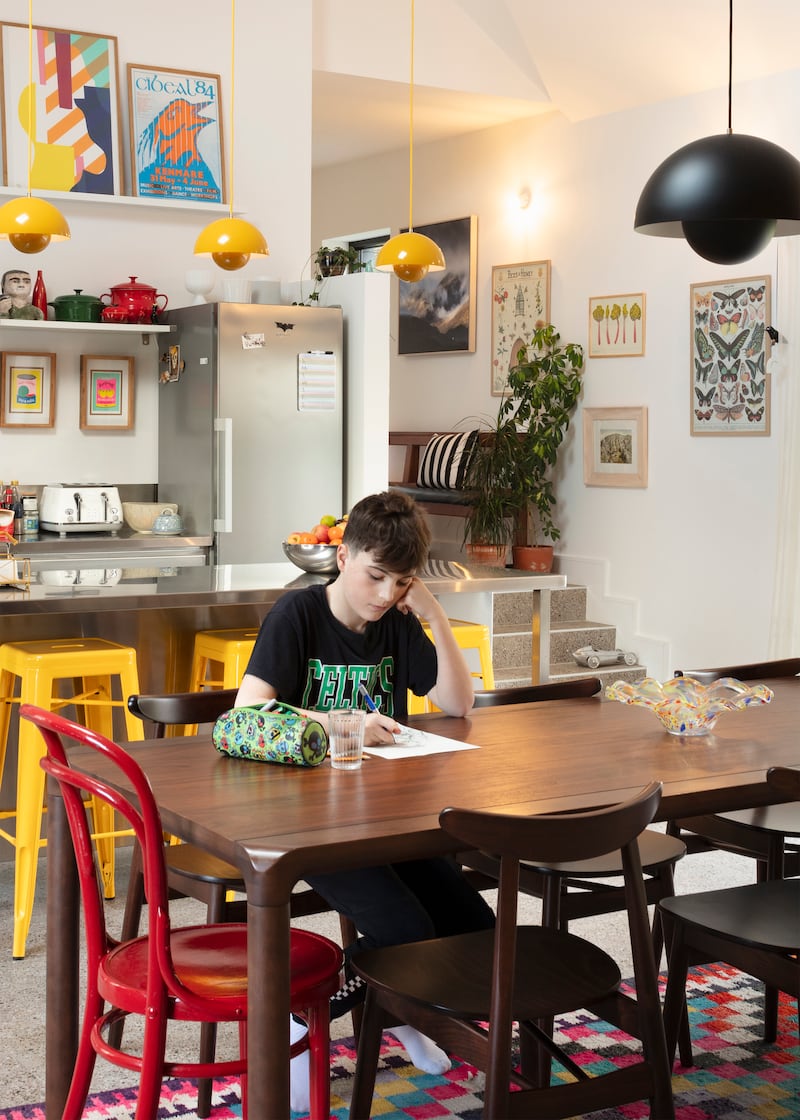
They took a really practical approach to investing in fixtures and fittings. While either could spend a while dreaming about a fancy designer kitchen, for example, “we had to find an alternative that we could afford”, Liz explains. “Poured concrete floors were replaced with the terrazzo-look tiles. Eamonn was hooked on Buster and Punch fixtures (a UK-based maker of light switches, door handles etc) for a few hours,” she says, until a more affordable option presented itself.
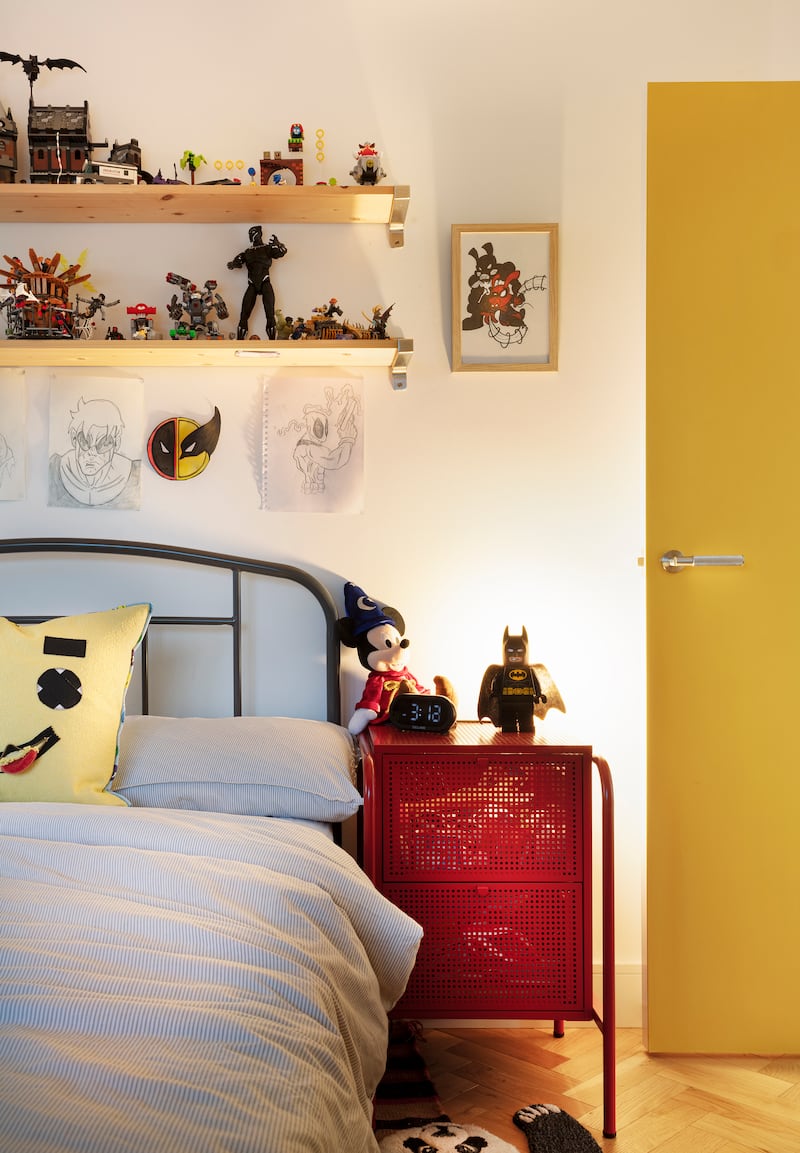
The use of colour is blocked throughout the open-plan kitchen diner where the blackbird yellow features strongly. The livingroom is drenched in a rich terracotta shade.
Where the pair had a head start on most ordinary mortals was in their design background, and their ability to create animations to help illustrate those ideas. This really helped convey to builders and fabricators what it was they wanted.
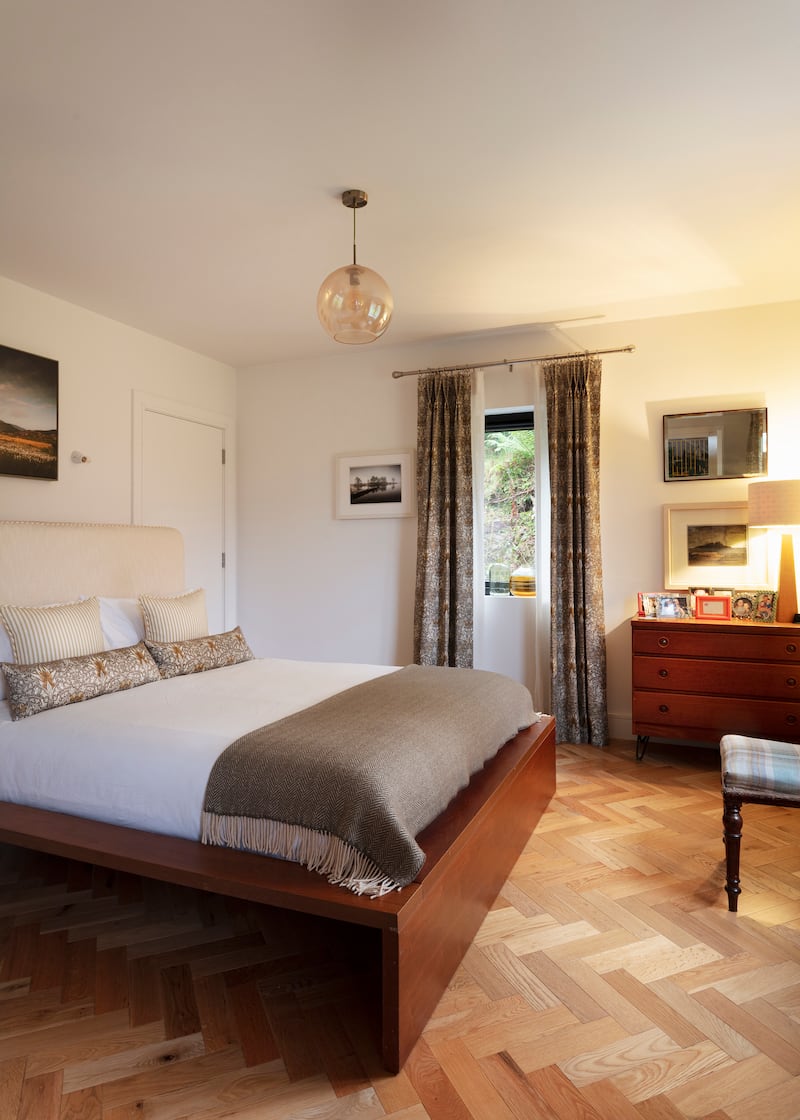
They really enjoyed the process and they involved the kids at every stage, Liz explains. “We wanted the boys to see that you can make your house fun as well as being a home. They were taken on many site visits, some under cover of darkness by torchlight.”
Homework and packed lunch duty sometimes fell behind, Liz admits.
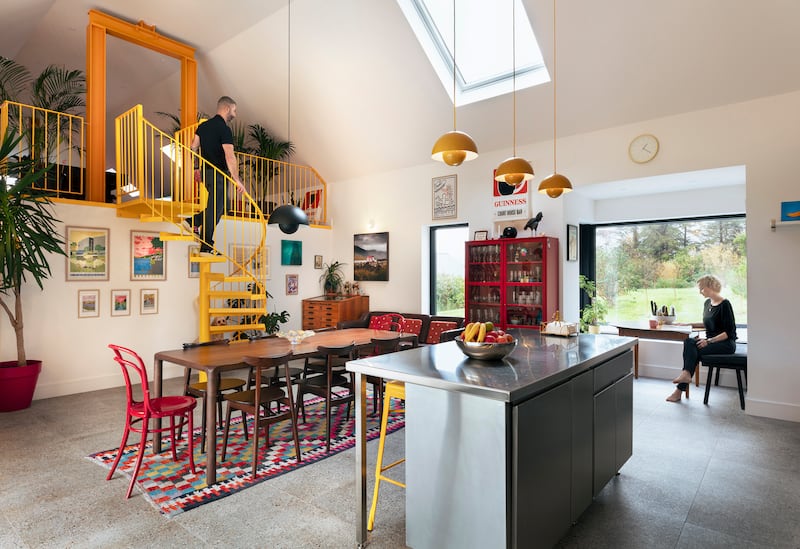
While their budget was €270,000 and builder Sean Healy of Lauragh Construction managed to get most of his orders in before the steep rise in building materials during Covid, there were duties they hadn’t budgeted for. All told, it cost about €330,000.
- Sign up for push alerts and have the best news, analysis and comment delivered directly to your phone
- Join The Irish Times on WhatsApp and stay up to date
- Listen to our Inside Politics podcast for the best political chat and analysis


















